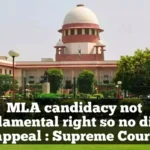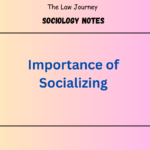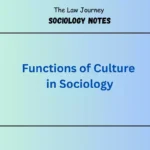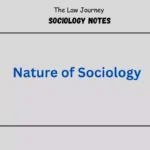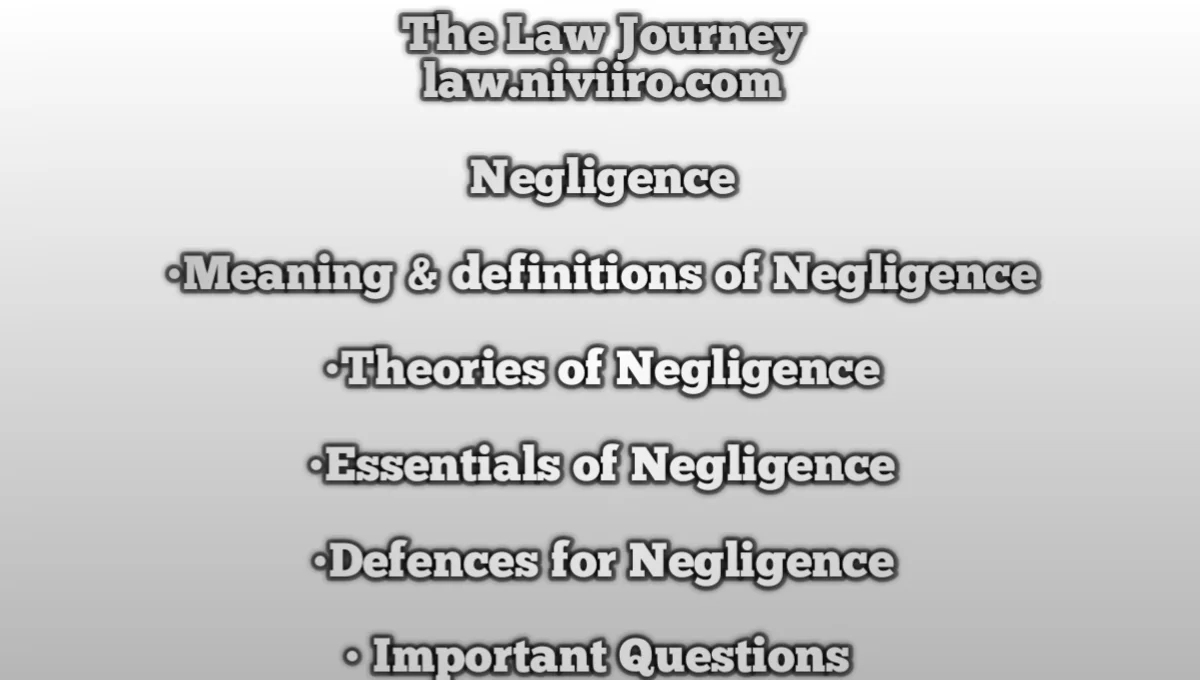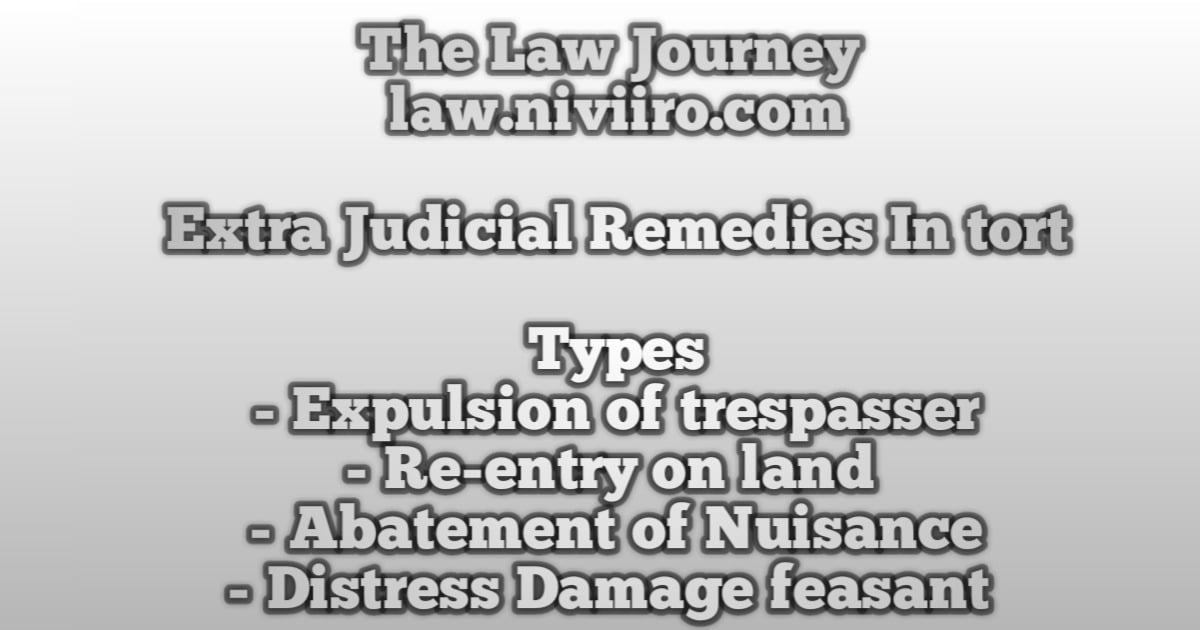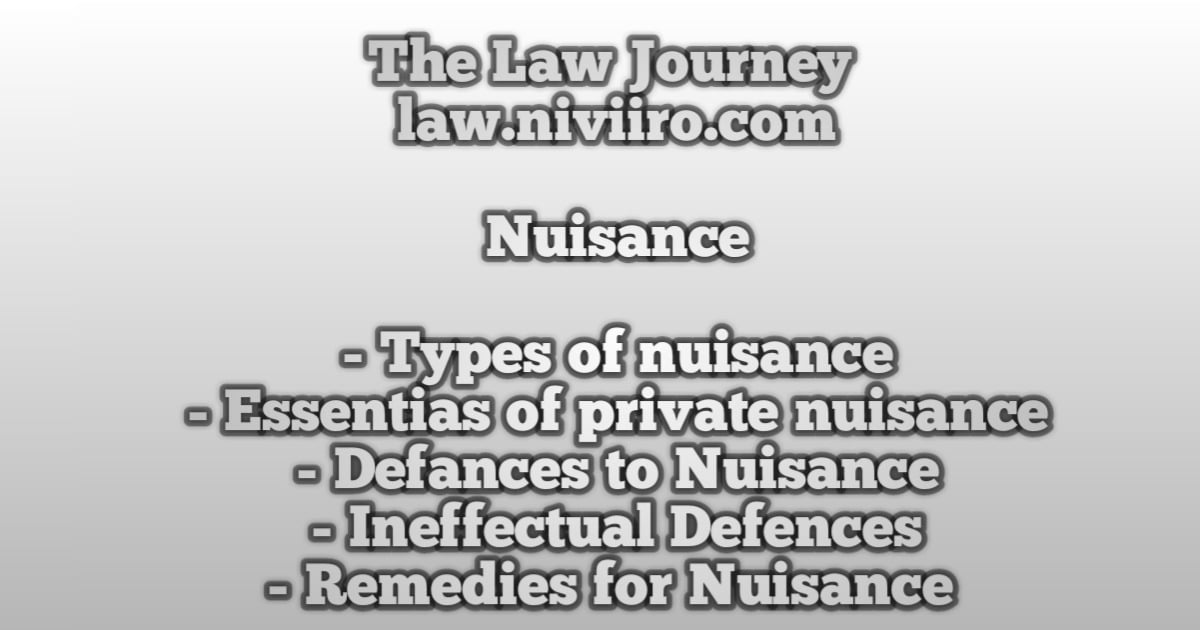Origin of word negligence – The word negligence derived from latin term ‘negligentia’ that means ‘disregard’.
Meaning & definitions of Negligence
When there is no intention of causing harm to the person complained of – it is called as negligence. Carelessness on the part of defendant constitutes negligence. If, there is an unreasonable conduct followed by harm to another-it gives rise to liability for negligence.
According to Swayne, J.– ‘Negligence is the failure to do what a reasonable and prudent person would ordinarily have done under the circumstances of the situation.’
Winfield – ‘Negligence as a tort is the breach of a legal duty to the care which results in damage, undesired by the defendant, to the plaintiff.’
Theories of Negligence
In the area of tort law, there are two theories relating to negligence.
Subjective Theory
This idea states that Negligence is a sign of “state of mind.” It ends any debate on this topic by treating carelessness as a distinct type of tort. Salmond, Winfield, and Austin all favour it.
Objective Negligence Theory
In contrast to a particular state of mind, the objective theory of negligence is a pattern of behaviour. In Donoghue v. Stevenson, 1932 AC 562, the House of Lords acknowledged it and classified negligence as a distinct tort.
Essentials of Negligence
According to Winfield, “negligence as a tort is a breach of a legal duty to take care which results in damage, undesired by the defendant to the plaintiff’. In an action for negligence, the plaintiff has to prove the following essentials:
(1) That the defendant owed duty of care to the plaintiff.
(2) The defendant made a breach of the duty i.e. he failed to exercise due care and skill.
(3) Plaintiff suffered damage as a consequence thereof.
1. Duty to take care
In Donoghue v. Stevenson, the producer supplied ginger beer in an opaque container to a retail seller R, who sold it to A, who gave it to a young woman as a treat. P. P drank the ginger beer but discovered a dead snail in the bottle. This had a negative impact on her, and she fell unwell as a result. She filed a lawsuit against M, the manufacturer. M had no contractual responsibility to P, yet the House of Lords decided that M was responsible. Lord Atkin’s decision is a classic.
‘You must take reasonable care to avoid acts or omissions that you may fairly predict would be likely to hurt your neighbour,’ he held. The answer appears to be, “People who are so intimately and immediately influenced by my conduct that they should properly be seen as being thus affected by my acts or omissions.” It was the manufacturer’s responsibility to ensure that the opaque bottle did not contain any harmful material. The manufacturer was found to be accountable.
In the case of Bolton v. Stone, D, a person on the roadside was hurt by a cricket ball struck by a player from a field some 100 yards distant from the road. There have been one or two such uncommon occurrences in the past. The defendants (club members) were found not to be accountable by the court. The impact was so unexpected that no wise person could have predicted it. Furthermore, it was too far away to be expected by any rational person.
2. Breach of duty
Breach of duty means not taking due care which is required in a particular case. The standard of care demanded is that of a reasonable or a prudent man. If the defendant acted like a reasonable prudent man, there is no negligence.
In 1947, Roe v. Minister of Health. Dr. G. administered a spinal anaesthesia to R in order to perform surgery. The anaesthesia had been kept in phenol as normal in an ampoule. However, phenol had entered the ampoule owing to a “invisible break,” and as a result, the patient R became paralysed. Dr. G had taken every precaution a competent surgeon would have, and he was unaware of the split in the ampoule. Dr. G was found not to be responsible. Dr. G was found not negligent after consulting the medical literature on the matter.
3. Consequent damage
There must be the injury to the plaintiff as a direct consequence of the negligence of the defendant. It must not be too remote. Theleading cases are (i) Donoughue V. Stevenson (ii) Bolton V. Stone (iii) The wagon Mound case etc.
Defences for Negligence
Defences depend upon the conditions which in general are negative tortuous liability viz., volenti non fit injuria, private defence, statutory authority act of state, remoteness of damage etc. Some of them have been explained as follows
(a) Contributory Negligence,
(b) Vis Major or Act of God, and
(c) Inevitable Accident
Contributory Negligence
Contributory negligence is when someone does a negligent conduct but the victim of that negligent act does not avoid the consequences of that negligent act while having the means and opportunity to do so. If the plaintiff does not use reasonable care, attention, and skill to prevent the consequences of the defendant’s carelessness, it is difficult for the plaintiff to recover damages from the defendant. Its foundation is in the maxims volenti non fit injuria and in jure non remota causa sed proxima spectatur.
Ordinarily, negligence refers to a breach of a legal duty of care, but when it refers to “contributory negligence,” it does not. It simply denotes a person’s failure to exercise reasonable care for the protection of either himself or his property, making him partially responsible as a “author of his own wrong.” The issue of contributory negligence arises when the claimant commits an act or fails to commit an act that significantly contributes to the harm done and is of a kind that it is appropriate to call negligent.
Thus, to hold that the conduct of the claimant amounted to contributory negligence, there has to be some causal connection with the damage suffered by the claimant.
Vis Major or Act of God
the Act of God or Vis Major means Any natural phenomenon like earthquake, volcano, tornado, hurricane, flood which is so straight, violent, direct, sudden and irresistible act which could not by any amount of human care and skill could have been resisted.
Vis Major, or an Act of God, was involved in Nugent v. Smith (1876) 1 CPD 19. Its defence must focus on the cause causans rather than just the cause unto itself of the alleged injury. It should be something amazing that nobody could have possibly predicted. It is insufficient to claim that negligence or vis-major coexisted.
In Nichols v. Marsland, 1875 LR 10 Ex 255, the defendant had many artificial lakes on his property that were being carefully maintained. However, after a prolonged period of rain, the reservoirs broke and some farm boats were taken away. Although the lawsuit was brought, it was determined that the amount of rain was unanticipated and that an act of God caused the water to escape.
Inevitable Accident
It can be used as a kind of defence in a negligence claim. A was passed out on a road. B was driving around a corner in a vehicle. In normal conditions, B would have been able to notice A before reaching out and touching him. However, due to a piece of newspaper that the wind had blown across B’s car’s glass, B was unable to see A and had to move over him. A sustained harm. However, in this scenario, A was unable to succeed since the accident was unavoidable.
Important Points
Principle Reasonable Foreseeability of Injury
The plaintiff’s harm must have been reasonably predictable in order for the defendant to incur a duty to the plaintiff. In other words, the need to exercise caution starts the moment there is a plausible chance that the defendant’s actions might put someone in risk. The responsibility only arises if a person is close to another’s person or property, according to the ruling in Heaven v. Pender.
Norms of a sensible guy Evaluate what a “reasonable man” (i.e., a man of ordinary prudence or intellect) would have anticipated and done in the situation as a relevant test to determine guilt. Since it is unaffected by the peculiarities (behaviour patterns) of the specific person whose conduct is under scrutiny, the standard of foresight of the reasonable man is an impersonal or objective test. Some people are extremely careful, but others don’t see or don’t care about even the most obvious hazards.
The reasonable man is presumed to be free both from over-apprehension and from overconfidence. He is a person who is not in a hurry, but is cool and collected and remembers to take precaution for his own safety even in an emergency.
Nervous Shock
Meaning – Nervous shock or injury inflicted upon a person by intentional or negligent actions or omissons of another.
In Hambrook v. Stokes Bros., a plaintiff’s case for nervous shock was recognised where there was no threat of bodily damage to the plaintiff but a concern of injury to her children. In one occasion, shortly after leaving her children in a tight street, a lady noticed a lorry speeding down the steep and narrow street. She was concerned about her children’s safety.
She died as a consequence of nervous shock after learning from a bystander that a youngster matching the description of one of her children had been hurt. In a case against the defendants, who had recklessly left the vehicle unattended, they were found responsible even though the lady feeling the shock was not physically injured.
In King v. Phillips, the defendant’s servant was recklessly backing a taxicab into a tricycle-riding youngster. At a distance of around 70 to 80 yards, the kid’s mother, who was in an upstairs window, could only see the tricycle under the taxi-cab and heard the youngster cry but could not see the boy. The boy and the tricycle had minor injuries, while the mother experienced nervous shock. The mother was found to be completely outside the realm of reasonable apprehension, and the defendants were found not to be accountable. This judgement is difficult to reconcile with Hambrook v. Stokes Bros., and it appears that King v. Phillips should be reconsidered.
Maxim Res Ipsa Loquitur
Proving the defendant’s carelessness by the plaintiff might be difficult if the plaintiff does not know what specific acts or omissions caused his harm or damage and the source of damage is known only to the defendant. In this case, the maxim res ipsa loquitur can be used. It is an evidence rule. It indicated that the facts and circumstances that the plaintiff established established a prima facie case of negligence against the defendant.
The crux of the matter is that the accident should tell its own story and make a picture of negligence on the part of defendant.
Example– (i) A person was going along a highway and he got injured by the fall of a barrel from out of the window of the (Page 3 of 9) defendant’s ware house; Byrne v. Boadle, (1863) 2 H&C 732.
(ii) The plaintiff was injured from a cinema banner which fell from the defendant’s premises when he was walking on the road; Mahindra Nath v. Mathura Das, AIR 1946 Cal 175.
(iii) Where an employee was killed by an explosion of the gas apparatus in the defendant’s factory; Moore v. Fox & Sons, (1956) 1 All ER 182 CA.
(iv) Where a surgeon left a towel inside the stomach of a patient after an operation; Mohan v. Osborne, (1939) 2 KB 14.
In Shaymal Baran Saha v State of West Bengal (AIR 1998 Cal. 203), the plaintiff (a little child) was waiting in line to buy a cricket match ticket. A stampede occurred as a huge number of individuals entered the queue. The panic-stricken throng stomped on the kid. The event happened as a result of the Cricket Association’s and the State Government’s inability to safeguard the safety/security of those in line and to provide enough amenities such as tickets, drinking water, and medical assistance.
There was no indication that the Cricket Association requested a larger police presence due to the big audience. The State’s defence behind the shield of delegated sovereign power was deemed unsustainable. As a result, the defendants, Cricket Association and State Government, are culpable in negligence for failing to fulfil their legal obligations to the plaintiff. The res ipsa loquitur concept definitely applies here.
Related Post
Meaning & definitions of Negligence ?
When there is no intention of causing harm to the person complained of – it is called as negligence. Carelessness on the part of defendant constitutes negligence. If, there is an unreasonable conduct followed by harm to another-it gives rise to liability for negligence.
According to Swayne, J.– ‘Negligence is the failure to do what a reasonable and prudent person would ordinarily have done under the circumstances of the situation.’
Winfield – ‘Negligence as a tort is the breach of a legal duty to the care which results in damage, undesired by the defendant, to the plaintiff.’
What are the Theories of Negligence ?
1. Subjective Theory As per this theory,
2. Objective Theory of Negligence.
What are the essentials of Negligence ?
(1) That the defendant owed duty of care to the plaintiff.
(2) The defendant made a breach of the duty i.e. he failed to exercise due care and skill.
(3) Plaintiff suffered damage as a consequence thereof.
Principle Reasonable Foreseeability of Injury ?
Whether the defendant owes a duty to the plaintiff or not depends on reasonable foreseeability of the injury to the plaintiff. In other words, the duty to take care arises as soon as there is reasonable probability of danger from the defendant’s conduct. In Heaven v Pender, held that the duty arises only if a person is near to the person or property of another.
Meaniong of Nervous Shock ?
Nervous shock or injury inflicted upon a person by intentional or negligent actions or omissons of another.
What do you mean by Maxim “Res Ipsa Loquitur” ?
To prove the negligence of the defendant by the plaintiff may sometimes cause hardship to the plaintiff if he could not know what precise acts or omissions led to his injury or damage and that the cause of damage was known only to the defendant. In such situation, the maxim res ipsa loquitur may be applied. It is a rule of evidence. It meant that the things speak for itself i.e., that facts and circumstances which the plaintiff has proved establish a prima facie case of negligence against the defendant..
References
- A.K Jain law of torts
- Universals Law of Torts
- Law of Torts by J.N. Pandey
- Law of Torts by Ratanlal and Dhirajlal
- P.S.A. Pillai’s – Law Of Tort
- Law of Torts by RK Bangia (22nd Edition)



